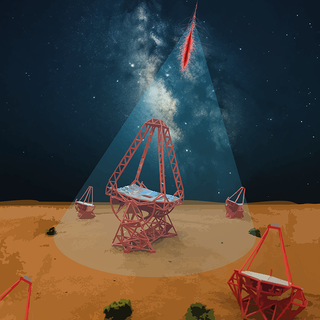Scientists have detected the most energetic cosmic rays ever discovered, and they’re being produced by mysterious sources relatively close to Earth.
The rays — which consist of electrons and their antimatter counterparts, positrons — were observed at energies all the way up to 40 teraelectronvolts (TeV), or 40,000 times the energy of visible light.
Spotted by the High Energy Stereoscopic System (HESS) observatory in Namibia, the rays lose energy as they travel through space due to their interactions with light and magnetic fields. This means that for rays of this energy to be detected, their sources must be relatively nearby. Yet what, exactly, is producing them remains unknown. The researchers published their findings Nov. 25 in the journal Physical Review Letters.
“This is an important result, as we can conclude that the measured CRe [cosmic ray electrons] most likely originate from very few sources in the vicinity of our own solar system, up to a maximum of a few 1000 light years away, a very small distance compared to the size of our Galaxy,” corresponding author Kathrin Egberts, head of experimental astroparticle physics at the University of Potsdam in Germany, said in a statement. (For comparison, the Milky Way is about 100,000 light-years across.)
Cosmic rays are high-energy particles produced by the sun; stellar explosions called supernovas; rapidly spinning neutron stars called pulsars; and other, unknown sources. When the rays smash into Earth’s upper atmosphere, they break into showers of particles that are detectable on Earth’s surface. But reconstructing the rays that produced these particle showers is a painstaking and uncertain task.
To find the cosmic ray electrons, the researchers used the HESS observatory, an array of five 40-foot (12 meters) telescopes in the Khomas Highland of Namibia.
Over a decade, the telescopes scanned the upper atmosphere for faint signs of Cherenkov radiation left in the wake of the fast-moving rays. Just as a plane traveling faster than the speed of sound creates a sonic boom, a particle moving through a light-slowing medium faster than light creates a faint blue glow around it.
By looking for this glow…
Click Here to Read the Full Original Article at Livescience…

